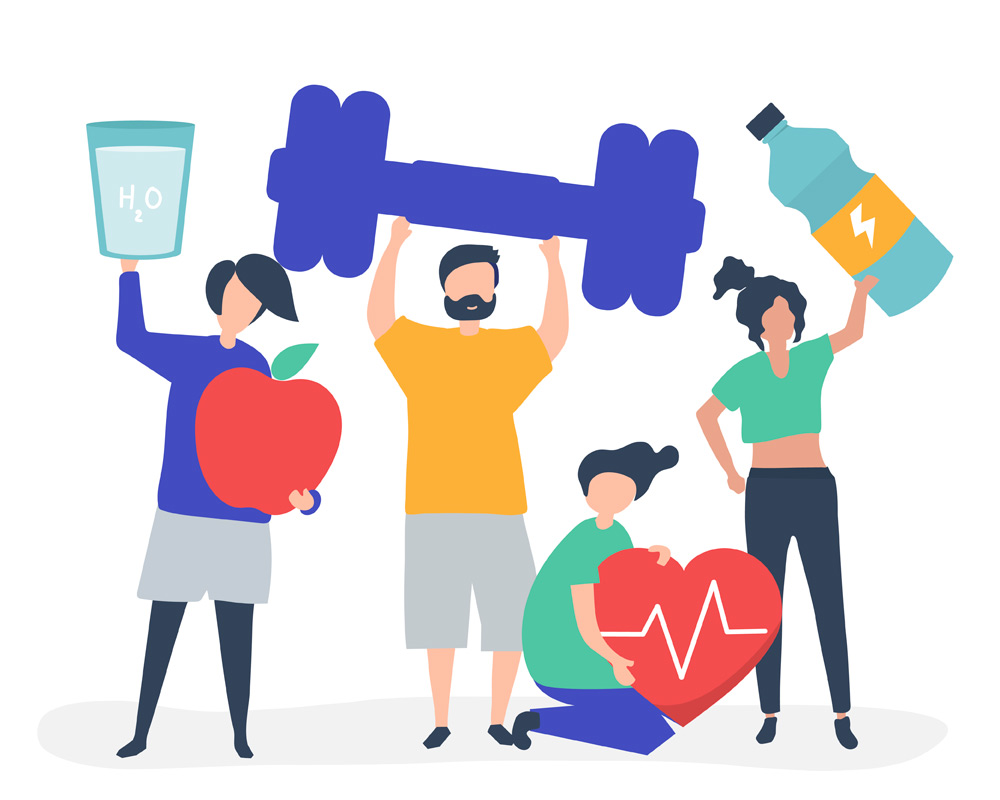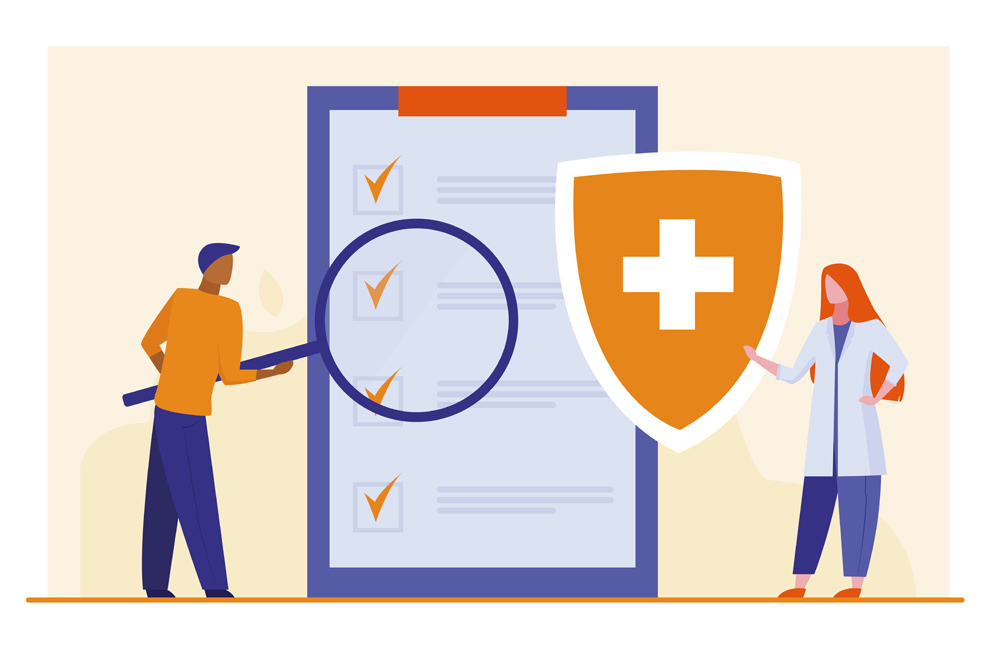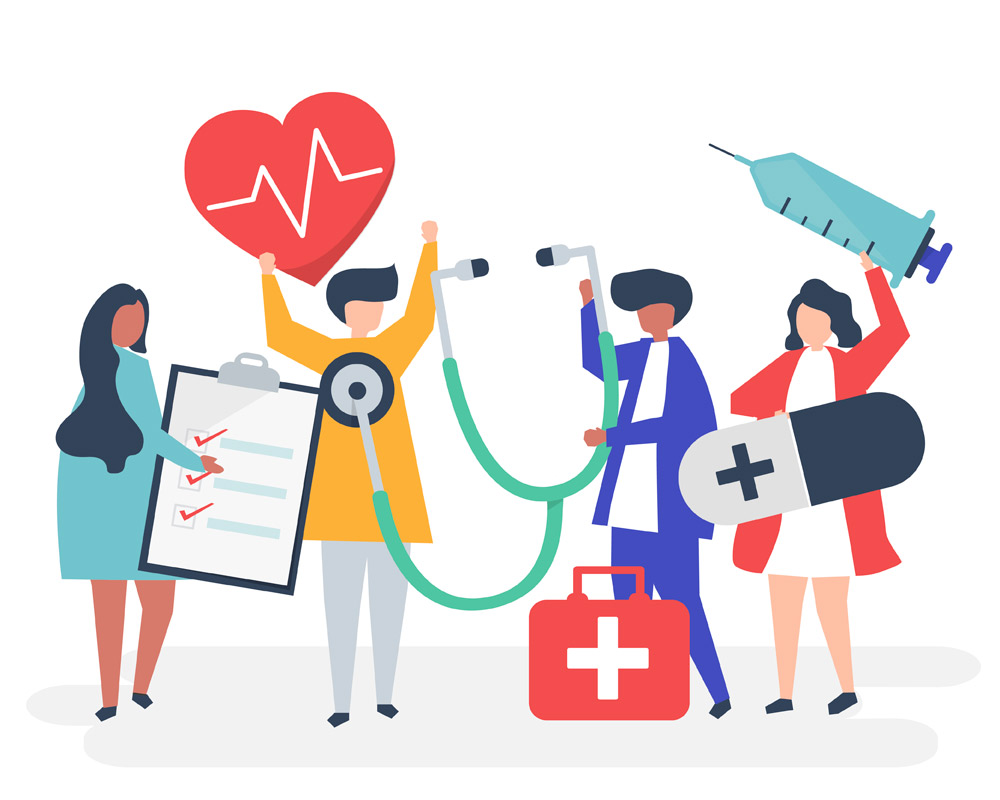By Dr. Bojana Beric-Stojsic
Biostatistics are applied statistics in biological and medical sciences for public health practice. Based on the data and models they provide, epidemiology — the study of the causation, spread and control of disease across time and space — gives us information about health status, morbidity and mortality in human populations. Together, biostats and epidemiology form the foundation of public health and guide all of our other decisions related to the prevention and control of diseases — both communicable and non-communicable — occurring in populations locally and globally.
How Biostatistics In Public Health Inform the Guidance of Experts During Disease Outbreaks
In essence, the statistical method is used to explain and predict some of the health outcomes and the direction of epidemics and pandemics, and it definitely influences decision-makers in public health. Those who are working on, proposing and advising the mitigation strategies in response to contagions use biostatistics data and results to guide public health and other healthcare practitioners on how to go about controlling these diseases. Two good examples would be studies that were designed to determine the effectiveness of mask-wearing as a measure to prevent the spread of certain viruses, as well as clinical trials designed to test the effectiveness and efficacy of vaccines, including those developed for the prevention of SARS-CoV-2.
Data Collection and Interpretation
When we talk about biostatistics in public health or any other application, the most important thing to keep in mind is that they are good only if the study or the design for data collection is appropriate and carefully planned. Then, we can extrapolate results and further interpret them.
Most research studies are based on samples, which represent populations. Selecting that sample to be as representative as possible of the population and the condition that we intend to study is very important for accurate generalization of the results and for the design of appropriate interventions. On the other hand, epidemiologic measures, such as morbidity, mortality, or incidence and prevalence rates, are based on every case and are used to assess and inform us about the health status of a population. An example of a reliable and sustainable source of local data about health and its determinants is the County Health Rankings & Roadmaps program, developed through a collaboration between the Robert Wood Johnson Foundation and the University of Wisconsin Population Health Institute.
All research in public health and health sciences is and should be based on scientific methodology and planning. How do we plan and structure the data collection, data analysis, and interpretation of the findings, as well as the application of those findings? Biostats are truly valuable in emergencies, when connecting the reality of panic and uncertainty with the strength of the scientific method to provide solutions.
Become a Leader in Public Health
Explore Program >In the case of the COVID-19 pandemic, our initial public health preparedness strategy and response planning were not executed quickly and efficiently. A public health surveillance system with tracking of test-positive and disease cases, hospitalizations, and deaths should have been ready for implementation, based on the history of pandemics in the not-so-distant past. The Health and Human Services Pandemic Influenza Plan, developed in 2005 and revised in 2006, 2009, and, most recently, in 2017, should have been utilized without issues. Also, after the Anthrax attack in 2001, the emergency preparedness strategy with its system of communication was improved and expanded through the development of a functioning LINCS (Learning Information Network Communication System), which connected the state and local Departments of Health in New Jersey. This should have been expanded to other states years ago, which would have made us better prepared for COVID-19, and should have been utilized more effectively during the pandemic.
A coherent system was needed to allow for valuable and appropriate decisions and predictions; provide data for epidemiologists to investigate and learn about the modes of transmission, incubation period, severity of the disease and a variety of symptomatological and clinical manifestations; and inform public health and health care practitioners with evidence. But at that time, the data were unavailable, and the surveillance system was silent.
In the early stages, it was a real struggle, as a result of the uncoordinated public health system and surveillance. It took some time for coordination and agreement between federal, state and local governments. That said, there are some good examples of a quick “recovery” from the inevitable shortcomings, such as the collaboration between two local governmental agencies in New York City — the Department of Health & Mental Hygiene and the IT Department of the Office of Chief Medical Examiner — as they quickly established a surveillance system with data collection to provide the mortality rates and inform the practice.

The National Healthcare Problem
The US public health and healthcare system, as we call it, is not functioning as one. A system consists of elements that are connected and working in synergy. The situation in this country at the beginning of the pandemic was not illustrative of that. It was so unfortunate that there was no effective connection between federal, state and local agencies, as that would have made this whole process of controlling the pandemic much smoother and produced a better outcome. A lot of responsibilities relative to public health were delegated to the states from the federal government without adequate support, creating a division between the national and state emergency responses, which became a huge problem in the initial weeks and months of this health crisis.
After the SARS pandemic, many of those in government had good intentions. A plan was developed in 2005, and the funding was provided to establish those links and that communication between the national, state and municipal governments; but sadly, the funding was eliminated without proper justification. When there’s no funding, usually there is no adequate provision of services, so the plan and strategies will not be implemented. There was and still is a disconnect, but the solution — as I see it, and as I teach my students in our Foundations and Issues of Public Health course — is to build those missing links and connect all levels of government, while establishing partnerships between public and private institutions, including civil society, non-profit and academic organizations.
One specific problem caused by this disconnect is that, at the beginning of the COVID-19 pandemic, private pharmaceutical companies started producing test kits, but they were not made available to governmental agencies to distribute to people. Developing strong public-private partnerships would solve this issue and make our system much more of a system for all people, which is something that government guarantees: care for all citizens.
A broader example is that we don’t often think about how much social and economic conditions, urban design and other “non-health” determinants are closely related to health outcomes, creating barriers for access to services in certain populations, especially those that are vulnerable and need them the most.
Biostatistical Lessons From the COVID-19 Pandemic
What We Can Learn From Surveillance, Data Collection and Vaccine Development
Biostatistics provide us with scientific, historical data and results; they give us direction for the future. If we examine certain diseases or trends in diseases, biostatistics should be guiding us on the right path. But the data have to be carefully collected and accurately interpreted to give biostatistics the power to support the symbiotic work of public health and healthcare professionals; otherwise, the biostats may be misleading, not useful and, in certain cases, even harmful.
To be effective, public health and healthcare systems need to work cooperatively, while cautiously recognizing that there may be some limitations when relying solely on surveillance data. The surveillance must accurately reflect the situation in a community in order to allow for appropriate comparisons between different communities, so that conclusions can be drawn and recommendations made. The reason for some lack of coordination in public health messaging at the national level last year could have been an uneven availability or utilization of testing in different localities, which may have caused inappropriate comparisons of data in those areas.
Another challenge that COVID-19 presented to scientists and practitioners was the wide variety of signs and symptoms that the SARS-CoV-2 virus causes in people. The timing of testing and onset of symptoms in patients is a very important factor in collecting accurate data to provide meaningful mitigation guidelines and care, which proved to be very challenging initially. As the pandemic progressed, this was better understood, and more accurate information was generated to guide public health guidelines and healthcare services.
Another positive note, which demonstrates the true value of biostatistics in this battle with COVID-19, is the success in developing new types of vaccines. This breakthrough is saving lives and providing us with facts about the effectiveness and efficacy of those vaccines in humans, while continuing to inform us about the progression of the virus in vaccinated vs. unvaccinated groups. It is encouraging information for public health and healthcare professionals and a source of comfort to the general public. It also gives us all a glimpse into potential future threats and our ability to quickly respond to them, both locally and globally.

What We Teach Our Students
Since the importance of biostatistics in public health cannot be overstated, it follows that it’s equally vital for aspiring professionals to learn how to read and use the data in the proper way before they graduate and enter the field. The purpose of biostats in our Master of Public Health program is to teach students to read peer-reviewed articles and newspaper articles and be able to properly and professionally interpret what is written, based on the knowledge they’ve gained in other courses, such as epidemiology and health policy. When you teach these subjects and work in these fields, you have to be able to read, interpret and provide conclusions as solid evidence to support recommended changes in policy or new policies.
We ensure our students understand that they need to be able to carefully design studies, propose sound ways of collecting data and select statistical analyses to interpret whatever they are studying, in order to offer credible direction for interventions. Then, our graduates have to be capable of translating this information clearly for their patients, their clients and the general public, most of whom might not have the same level of knowledge or health literacy as they do.
By allowing and guiding students to find the answers to their own questions using available resources that are accurate, valid and reliable, we show them how to make informed decisions, so that they are prepared to successfully complete all of the objectives above and start working effectively the day after graduation.
Notable Success Stories in Biostatistics and Epidemiology
I believe the greatest successes of biostatistics in public health have been the immunization and vaccination against smallpox, polio, influenza, SARS-CoV-2 and other viruses, along with related data collection. Even in pandemics, it’s important to remember that models are just models, but they have been useful in giving us an orientation in what to do and a good idea of how urgent certain outbreaks were. They have been used to predict the way that outbreaks would develop and progress. Additionally, in many cases, regression analysis has allowed us to see how several different variables all led or did not lead to a specific outcome.
Statistics explain and describe certain events that would not be clear or useful without them. The best examples are all of these infectious diseases and the efforts to control them, but even in smaller, local epidemics, such as salmonella, we always look to biostats for answers.

The Evolution and Future of Biostatistics in Public Health
Significant Progress Thus Far
Because of the great importance of biostatistics in healthcare, the field is continuously evolving and developing. We have basic mathematical relations and methods that we use, which have definitely been improved over the years and are now providing us with more information as well as more methods of looking at the same data. These advancements are enabling us to see trends, especially in epidemiology and other disease-related research. In addition to infectious diseases, biostatistics are teaching us more about cancer and chronic conditions like diabetes and cardiovascular disease, and have led to the development of better treatment plans to control them.
Healthcare and public health have been developing based on the ability of biostats to provide us with evidence, and that trend will continue in the future. This is the essence of any graduate program related to the health science fields.
The Influence of Technology in the Years Ahead
In the next five to 10 years, I hope that we will have more information about a greater number of diseases as well as the treatment and control of those conditions. The intersection of biostatistics and artificial intelligence is a big part of that. IBM’s programs, for instance, use biostatistics and mathematical models, which is exciting. Consider the capabilities of their Watson supercomputer: Instead of interpreting all of the labs themselves, healthcare professionals and scientists can provide Watson with necessary information about patients, and the computer will provide the diagnoses. It is programmed to consider everything at each moment and make determinations in an incredibly short period of time — something we humans cannot possibly do.
Nevertheless, we must remember that there is no substitute for the human brain and what we can do with the tools and technology available, especially when it comes to inquiring and critical thinking. I have questioned whether or not I, as a patient, would be able to trust a diagnosis from Watson; perhaps instead, I would prefer a good conversation with my physician, during which we could consider everything together and draw our own conclusions.
In multiple ways, this technological progress and innovation are very good and exciting for public health, epidemiology and humanity in general. This change that is available to us is a tool we didn’t have before. If we use it in the right way, we will find new preventative strategies and possibly cures for diseases, and people will get better or not get sick in the first place.
Biostatistics in Social Justice
Social justice is another crucial part of public health and healthcare, and should be underlying the ideas and motivation in all of our work. I work with the United Nations, representing two associations there in the matters of human rights and health issues in girls specifically.

Well-documented Issues of Social Justice
One major problem in some parts of the world — especially sub-Saharan Africa and South Asia, but also East Asia, Latin America, the Middle East and elsewhere — is girls being forced into marriage at ages as young as nine or 10. Another is the fact that many schools in some very poor regions, including sub-Saharan Africa, do not have bathrooms for girls, so they can’t go to school on certain days of the month; there’s almost a structural, physical discrimination against girls in those places. In the countries of Chad and Senegal, for example, fewer than 10% of schools have toilets for female students; in the former, only 25% even have them for males. And in Malawi, neither boys nor girls have toilets or running water in schools. Similar issues exist in parts of the Middle East, such as Afghanistan, where only 4% of children have places to wash their hands.
There are parts of the globe where girls or children in general don’t even have access to elementary education. In Syria, girls are often prevented from going to school at all; with 33% of schools in the country being damaged or destroyed by war, boys’ educational opportunities are often greatly limited as well. Resources taken for granted in the developed world are still shockingly scarce in certain places: for instance, just 1% of schools in Myanmar and 2% in Niger have access to computers.
Some populations of the world — including people in sub-Saharan Africa as well as those in Afghanistan, Pakistan, Cambodia and other areas — are ravaged by diseases like cholera, typhoid, hepatitis and Dengue fever due to a lack of clean water. Many people in these least-developed regions also have extremely limited access to healthcare. And we know well that poverty is one of the essential reasons for all of the disparities and undesirable health outcomes. We can even find some of these great disparities in resources and access here in the United States, with certain communities living in terrible poverty.
Many people are aware of these issues, especially those who make decisions and develop policies, but until they see the numbers and compare different countries and regions, they don’t have the perspective to fully understand the scope and severity of the problems. Advocating for girls’ rights, children’s rights or human rights and social justice is always more effective when you have evidence: data and numbers from biostatistics and public health. The World Health Organization (WHO), for example, has plenty of data on their website, making it a good resource for such purposes. We illustrate all of our activities and support advocacy efforts using these numbers from biostatistical data collection.

Social Justice Issues We Need to Learn More About
Unfortunately, there are still some areas in which we don’t have enough data, including disparities and racial inequalities in health outcomes and access to healthcare.
Additional areas where available data is insufficient are social determinants of health, i.e., the environmental conditions that affect various health, functioning and quality-of-life risks and outcomes. These determinants exist in people’s birthplaces, hometowns, households, workplaces, schools, houses of worship and recreational areas, and are divided into five categories:
- Neighborhood and built environment, where risk factors can include high rates of violence, polluted or otherwise unsafe air or water, secondhand smoke and more.
- Social and community context, with risk factors such as discrimination, low income compared to expenses for essentials, anxiety and depression in caregivers of the disabled and a lack of support for children who have incarcerated parents or suffer mental trauma from bullying.
- Economic stability, which can be impacted by disabilities, illnesses and other conditions that make it hard to find and keep a job, as well as by low salaries that are not commensurate with the cost of living — leading to food insecurity, homelessness and other problems.
- Educational access and quality, which can be jeopardized or diminished by low income, disabilities, bullying and other factors that can increase stress and impair brain development in young kids.
- Healthcare access and quality, where negative effects can be caused by a lack of insurance and inability to afford medications, as well as an absence of needed healthcare services in close proximity to people’s homes.
The lack of data in these areas is not the fault of biostatistics; we have not yet explored these health issues in the appropriate way, and we need to do so to get more information and better understand them.
The Healthy People 2030 initiative is making progress in that endeavor. Subject matter experts from the federal government have been working in different groups and have identified developmental and research objectives to improve health and well-being. Both of these types of goals are related to public health issues that have an insufficient amount of reliable baseline data. Developmental objectives involve high-priority problems that have evidence-based interventions, while research objectives involve problems that are a heavy health or economic burden or have substantial disparities between population groups, and have yet to be linked to evidence-based interventions.
Over time, as interventions become associated with the research objectives, these goals can evolve into the developmental type. Then, when more credible data has been collected, those developmental objectives can further evolve into the core type, which are measurable goals with set targets for the decade.
About the Author

Bojana Beric-Stojsic, PhD is the Associate Professor of Public Health and Director of the Master of Public Health (MPH) Program in the School of Pharmacy and Health Sciences at Fairleigh Dickinson University. She and her team designed the fully online MPH program at FDU from scratch and launched it in the spring of 2020, providing an avenue for students to acquire solid public health leadership skills in health policy, health analytics, epidemiology and other public health areas, in order to prepare them for job placements ranging from nonprofit organizations to governmental organizations.
Previously, Dr. Beric-Stojsic held the position of Chair of the Department of Public Health at Long Island University in Brooklyn, NY. She has also been very active in supporting global social justice and children’s human rights, especially girls’ rights. Since 2010, she has served as an ambassador at the United Nations, representing the national professional association SOPHE (Society for Public Health Education) and theIUHPE-NARO (International Union for Health Promotion and Education – North America Regional Office) as Vice President. In her role as a UN representative, Dr. Beric-Stojsic has been very involved with The Working Group on Girls (WGG), an organization that helps raise the voices of girls while advocating for and empowering them both here at home and around the world.
Dr. Beric-Stojsic is originally from Yugoslavia (now Serbia) and is passionate about traveling, having visited 40 US states and 23 countries thus far.

